Get to know the photo book "The Most Beautiful Trails of Patagonia"
Torres del Paine, El Chaltén, Bariloche, Ushuaia, Villarrica, Cerro Castillo, Dientes de Navarino and Parque Patagonia
Diving with sharks and whales in Cabo Frio, Brazil
The northern coast of Rio de Janeiro state is known throughout Brazil for having excellent diving spots, with abundant marine life and good visibility. Despite the fame already achieved, I was contacted by Alpha Dive Cabo Frio to spend 3 days sailing through the islands of Cabo Frio and Búzios searching for spots that are currently not visited by other scuba diving boats. I promptly accepted the proposal made by Alessandro Di Reda, one of Alpha Dive’s partners, and we left Cabo Frio on the afternoon of March 13, 2019.
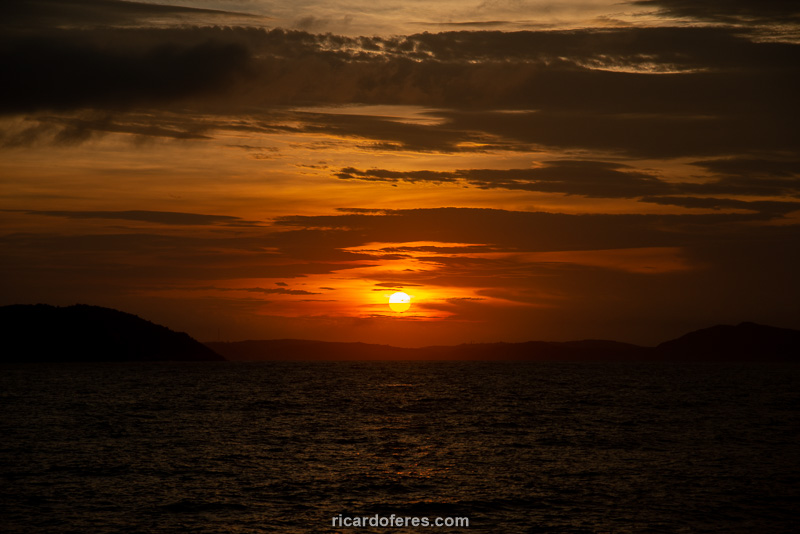
On the first afternoon, we only sailed looking for spots that looked promising and enjoyed a beautiful sunset over Cabo Frio
On the second day, when we were sailing 3 km (2 mi) off of Cabo Frio coast, almost on the border with Búzios, we saw dozens of boobies diving into the water and Cassiano, the other owner of Alpha Dive, cut off the engines so I could photograph this feeding. But why shoot from above the water if I always wanted to do an underwater photo of a diving booby? I went to the water with Alessandro, equipped only with mask, snorkel and fins and I, of course, with the underwater photo gear.
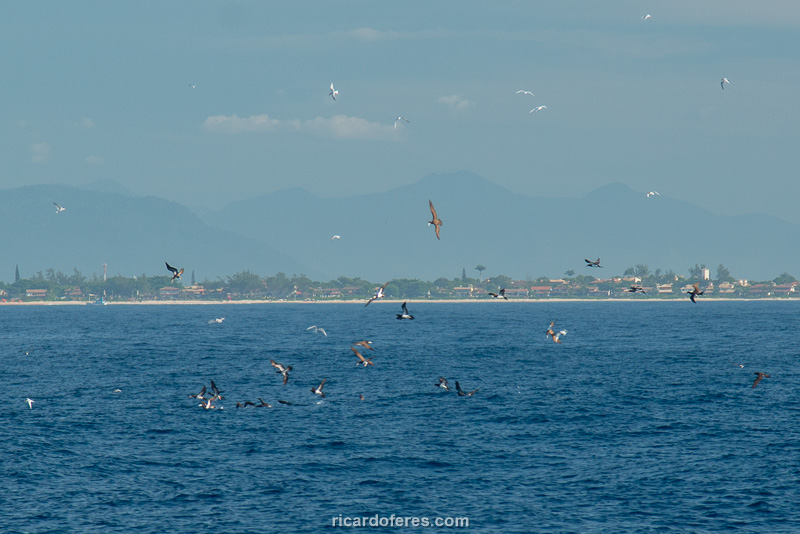
Boobies attacking a school of sardines
Soon we were diving among thousands of sardines, which were being attacked by blue runners and Atlantic bonitos, besides the boobies. Although it was fun to see this hunt, I wasn’t successful taking the picture I wanted, as the boobies were not diving very close to me, even when I was about 5 meters deep. So I decided to go 10 meters deep and when I was there I had a gigantic surprise (literally), since at about 20 meters of depth appeared a Bryde’s whale!
As the whale was more than 15 meters (49 ft) from me and I was using an ultra-wide-angle lens, I knew I would not be able to photograph it, so I just stayed there, hovering in the blue and enjoying the rare chance of seeing a whale swimming in search of its meal. As unfortunately I do not have the breath of a whale, I returned to the surface and told Alessandro what I had seen. When I tried again, I saw another only in the second or third immersion and, unfortunately, farther than the first.
Anyway, the whale food was still around, so there was no reason for them to leave, and as I was breathing for an immersion, I had another big surprise seeing a shark pass about 10-meter (30 feet) deep. I sank down and began to swim parallel to it, making a very slow approach, until it changed course and came towards me, possibly because it didn’t like to have me by its side. I understood the warning, returned to the surface and it continued in the previous direction.
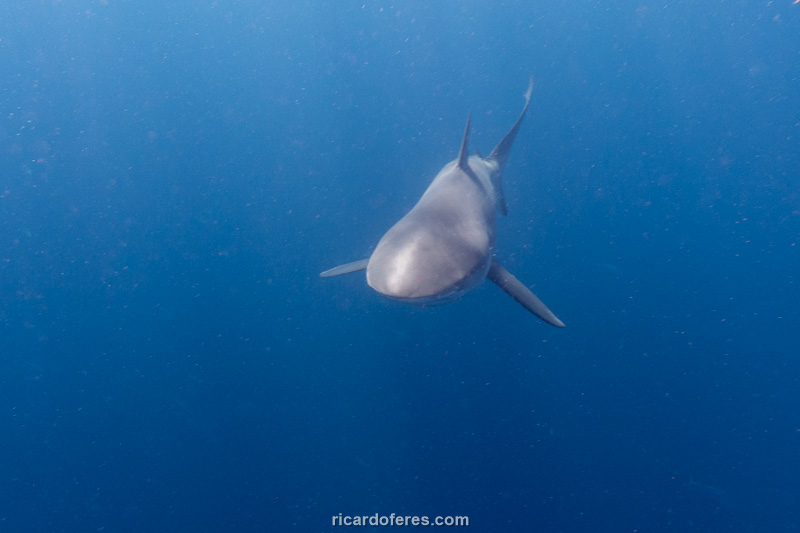
Shark approaching
Now that you are thinking that we are suicidal, it is worth remembering that shark attacks against humans are extremely rare, even more against divers, but as we were in the middle of a feeding frenzy, we thought it was good to stay with our backs to each other, so we would have 360 degrees of vision all the time. Soon Alessandro gave me a nudge so strong in the kidney that I already turned around with the certainty of having something very interesting to photograph, and indeed! A shark was swimming in our direction and I had time to take the picture below before it realized we were humans and not part of its food chain, turning its attention to the fish again. At that time Raphael, Alpha Dive’s crew member, was also in the water and we called him to stay together, but even before he arrived, another shark (or would it be the same?) approached and fled as we faced each other.
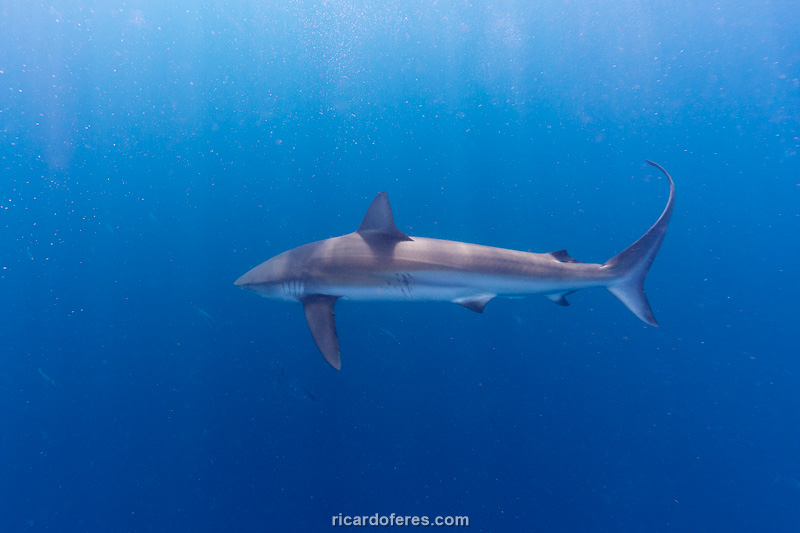
When I stayed face to face with the sharks, they changed course
I have dived several times with sharks, whether in Brazil, Hawaii or Australia (click here to read the article about the sharks in Australia), and definitely this is not their usual behavior, when they do not even mind about the divers, so we decided to swim back to the boat, each one looking at one side. When we had swum half the distance, Rafael told us that there was a shark coming from behind me, I turned and it left again. Fortunately Raphael was able to record this scene and we could see that there were at least three of them surrounding us and curious to know what animals we were, because if they really wanted to attack us, they would have done it with ease.
Back on the boat, we were adrift enjoying the whale watching, but unfortunately Bryde’s whale does not have the habit of showing the tail. Anyway, it’s lovely to see only their backs when they are on the surface.
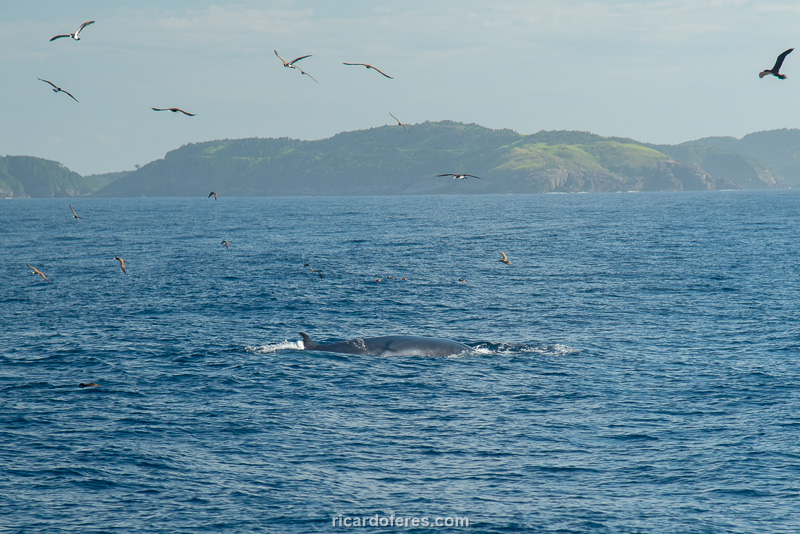
Bryde’s whale attacking a school of sardines
After they left, Cassiano turned on the engines and we returned to the original plan, looking for new diving spots for scuba divers with different levels of training, and from the photos below it’s clear that we did excellent dives among large schools of pelagic fish, many extremely calm turtles, morays swimming out of their dens and dozens of fish species of all sizes and colors, confirming the region’s enormous biodiversity, and with average visibility of 20 meters (60 feet).
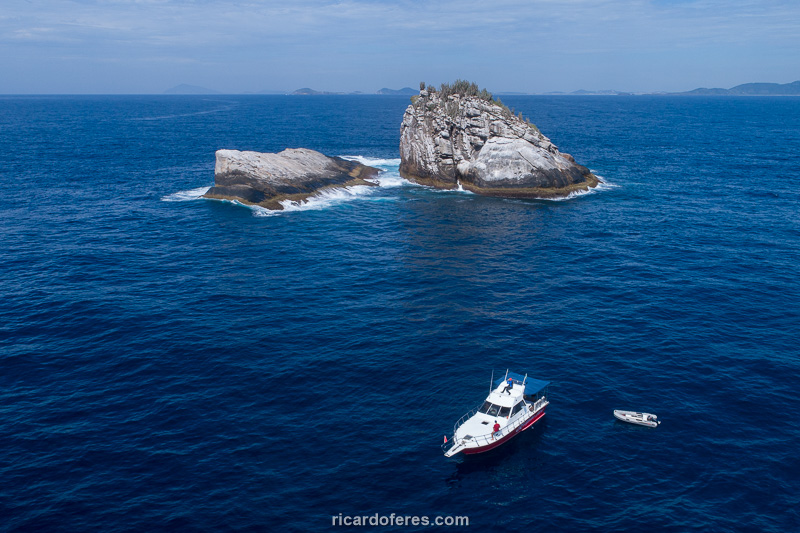
Filhotes Islands, great spot for advanced divers
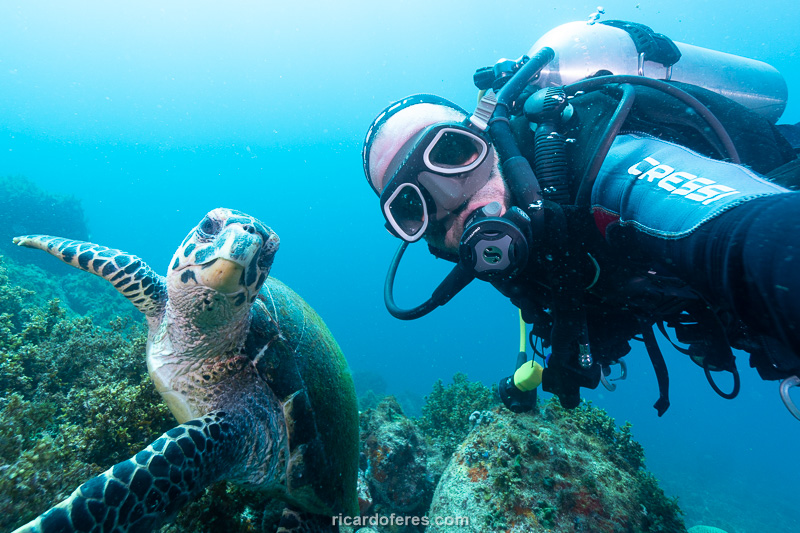
The turtles are so calm they even pose for a selfie
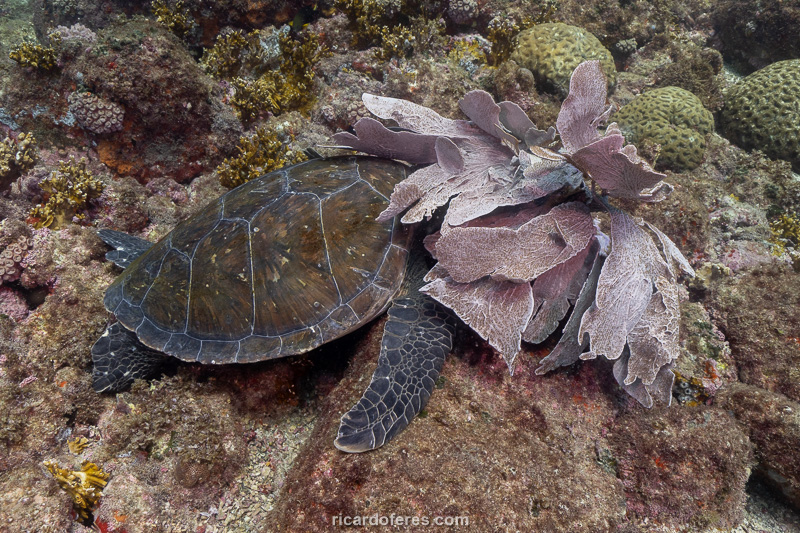
Turtle taking a nap under a gorgonian
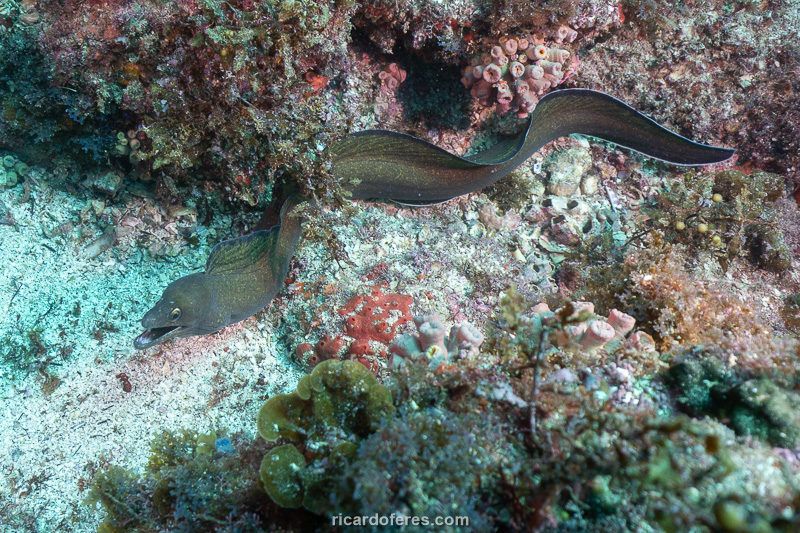
We saw many morays, some of them outside the den in broad daylight
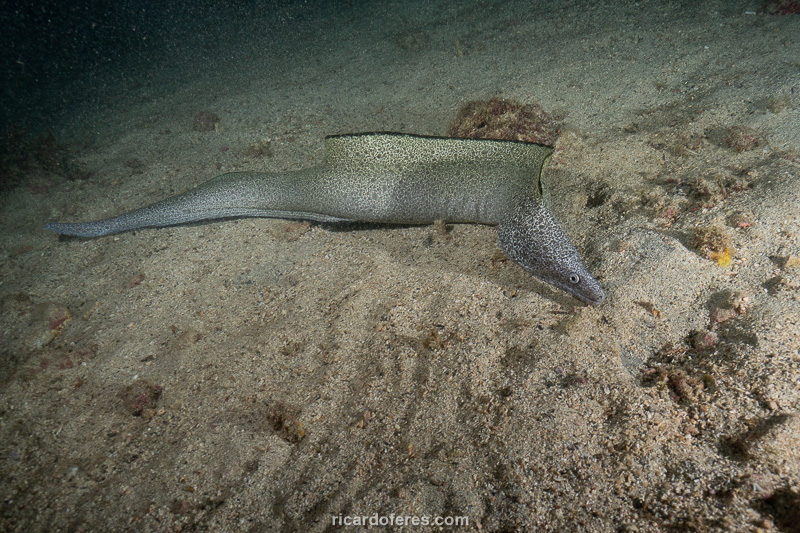
This one was seen in a night dive
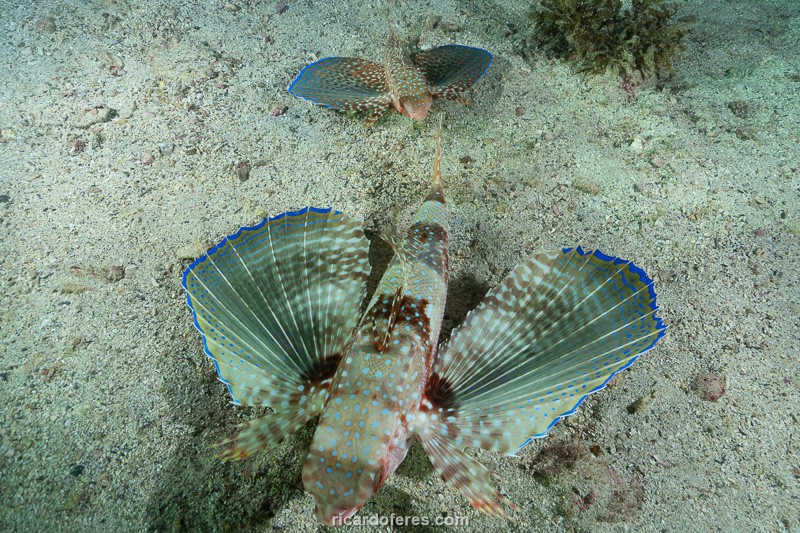
At night there were dozens of flying gurnards in an area of just a few square meters
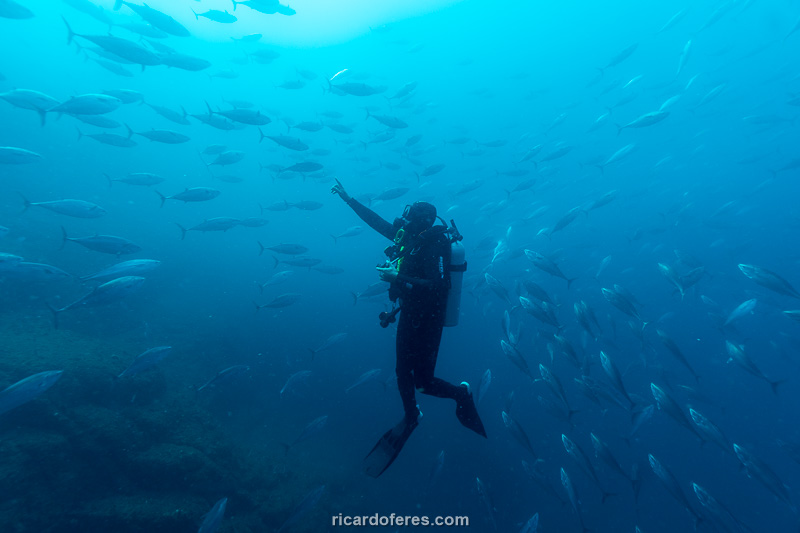
Alessandro surrounded by a school of Atlantic bonitos
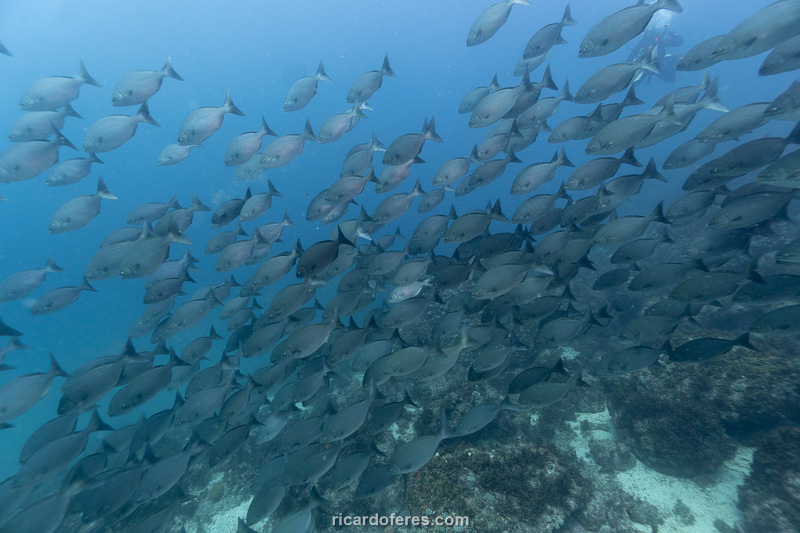
To see large schools was usual, like this one of bermuda sea chubs
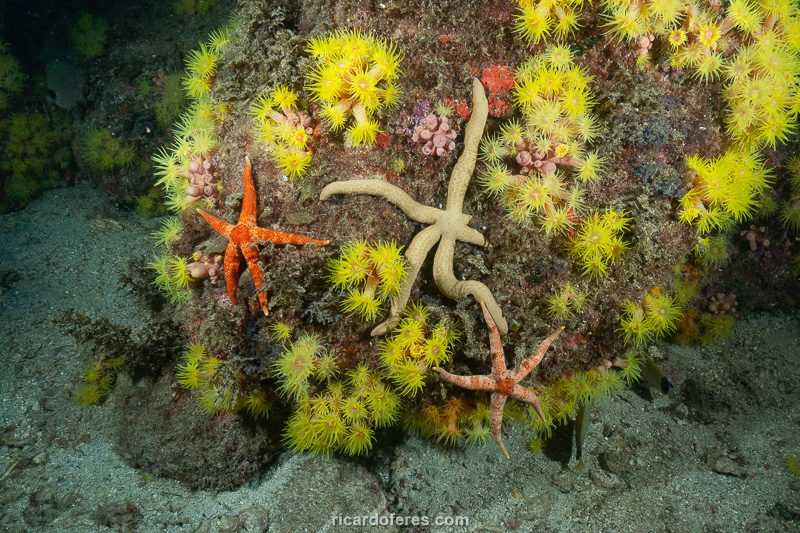
Starfish and sun coral, which at night opens and shows the reason for its name
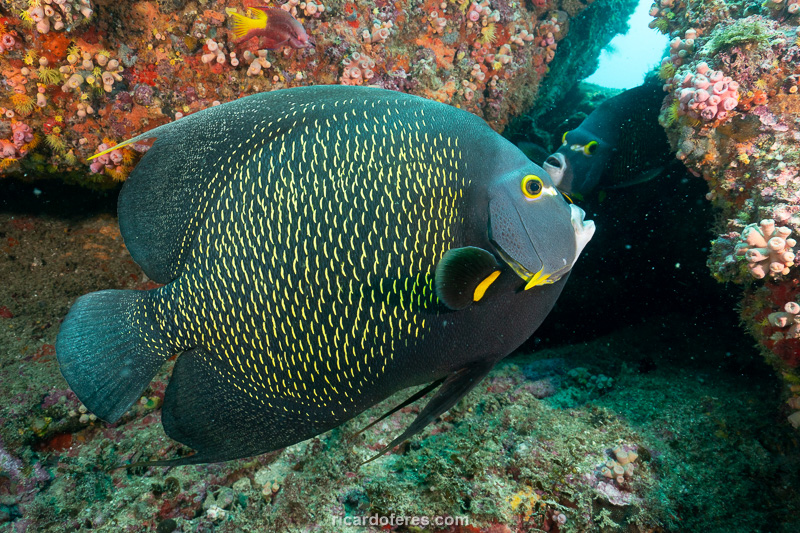
Angelfish couple posing for a photo
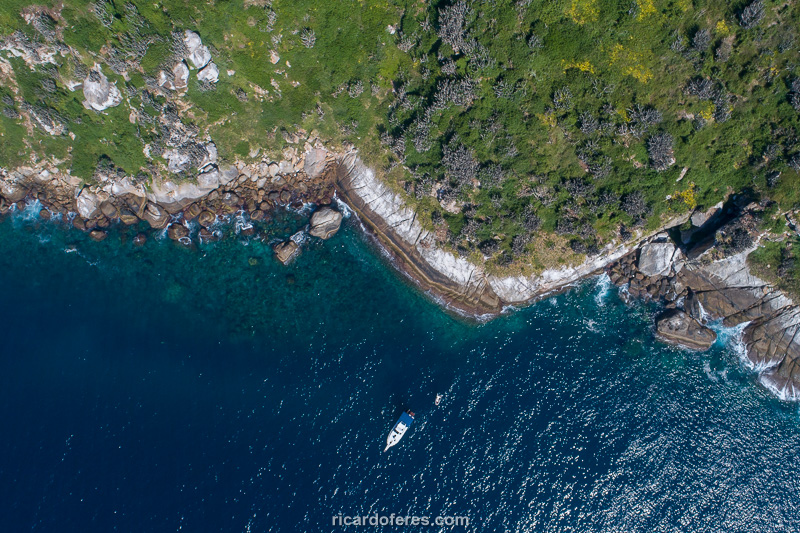
Âncora Island
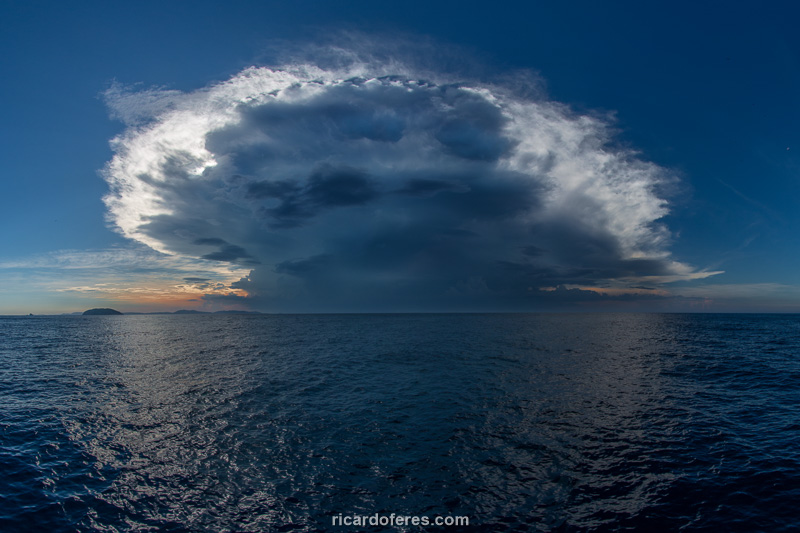
The surface interval also gave us good sights
Get to know the photo book "The Most Beautiful Trails of Patagonia"
Torres del Paine, El Chaltén, Bariloche, Ushuaia, Villarrica, Cerro Castillo, Dientes de Navarino and Parque Patagonia
